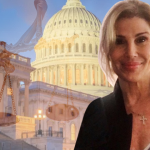When the celebrated Iranian artist Khosrow Hassanzadeh died of methanol poisoning this month, everyone but his country’s most ardent theocrats recognized that prohibition was the problem. Yet when the Biden administration unveiled its plan to address the “emerging threat” of fentanyl mixed with the animal tranquilizer xylazine last week, it claimed prohibition was the solution.
In reality, these two hazards are manifestations of the same familiar phenomenon. When governments try to stop people from consuming politically disfavored intoxicants, they make consumption of those substances more dangerous by creating a black market in which purity and potency are highly variable and unpredictable.
The danger to which Hassanzadeh succumbed is caused by bootleggers’ sloppy distilling practices and reliance on industrial alcohol that is unsafe for human consumption. Hassanzadeh thought he was drinking aragh, a traditional Iranian spirit distilled from raisins, which he obtained from a supplier he mistakenly trusted.
During the COVID-19 pandemic, Iran saw a sharp increase in methanol-related deaths and injuries, including permanent blindness, thanks to a combination of folk beliefs about the preventive properties of alcohol and an ethanol shortage caused by the sudden demand for hand sanitizer. In recent months, Iranian authorities have noted another surge in such casualties.
While the proximate cause of the more recent trend is unclear, the root cause is obvious: Iran’s ban on alcohol consumption by Muslims forces drinkers to rely on illicit sources that sell iffy and possibly poisonous liquor. In a legal market, people who buy distilled spirits do not have to worry about methanol contamination.
“Khosrow was taken from us because of the lack of social freedoms,” Nasser Teymourpour, a fellow artist, observed on Twitter after his friend’s death. “You took Khosrow from us.”
Although drug warriors are keen to overlook the fact, the same analysis applies to Americans who die after consuming black-market drugs of unknown provenance and composition. The alarm about xylazine in fentanyl, which compounds the danger of fatal respiratory depression and may increase the risk of serious and persistent skin infections, is just the latest illustration of this predictable peril.
Before the federal government was warning us about xylazine in fentanyl, it was warning us about fentanyl in heroin. Both dangers are caused by laws that make drug use a potentially deadly crapshoot.
Fentanyl is much more potent than heroin, so it is easier to smuggle, and can be produced much more cheaply and inconspicuously since it does not require opium poppies. Xylazine has similar advantages: It is an inexpensive synthetic drug that can be produced without crops. And unlike fentanyl, it is not classified as a controlled substance, so it is easier to obtain.
The emergence of fentanyl as a heroin booster and substitute made potency even harder to predict. The consequences can be seen in record numbers of drug-related deaths.
The government aggravated that situation by restricting the supply of legally produced, reliably dosed opioids, which drove nonmedical users toward more dangerous substitutes and left bona fide patients to suffer from unrelieved pain. Despite this recent experience with the perverse effects of prohibition, the Biden administration is confident that it can lick the xylazine menace by stepping up efforts to “reduce and disrupt the illicit supply chain and go after traffickers.”
Whether it is vitamin E acetate in black-market THC vapes, MDMA mixed with butylone, levamisole in cocaine, or fentanyl pressed into ersatz pain pills, prohibition reliably makes drug use more hazardous. Sometimes that effect is intentional.
During Prohibition, the federal government required that industrial alcohol be mixed with methanol to discourage diversion. While critics called the resulting deaths “legalized murder,” Anti-Saloon League leader Wayne Wheeler argued that “the person who drinks this industrial alcohol is a deliberate suicide,” even while conceding that it would cost “many lives” to “root out a bad habit.”
Iran’s rulers seem to have a similar attitude. Joe Biden, a longtime drug warrior who now claims to embrace “harm reduction,” should reject that lethal logic.
© Copyright 2023 by Creators Syndicate Inc.
The post Methanol-Tainted Liquor and Xylazine-Tainted Fentanyl Illustrate the Same Prohibitionist Peril appeared first on Reason.com.







